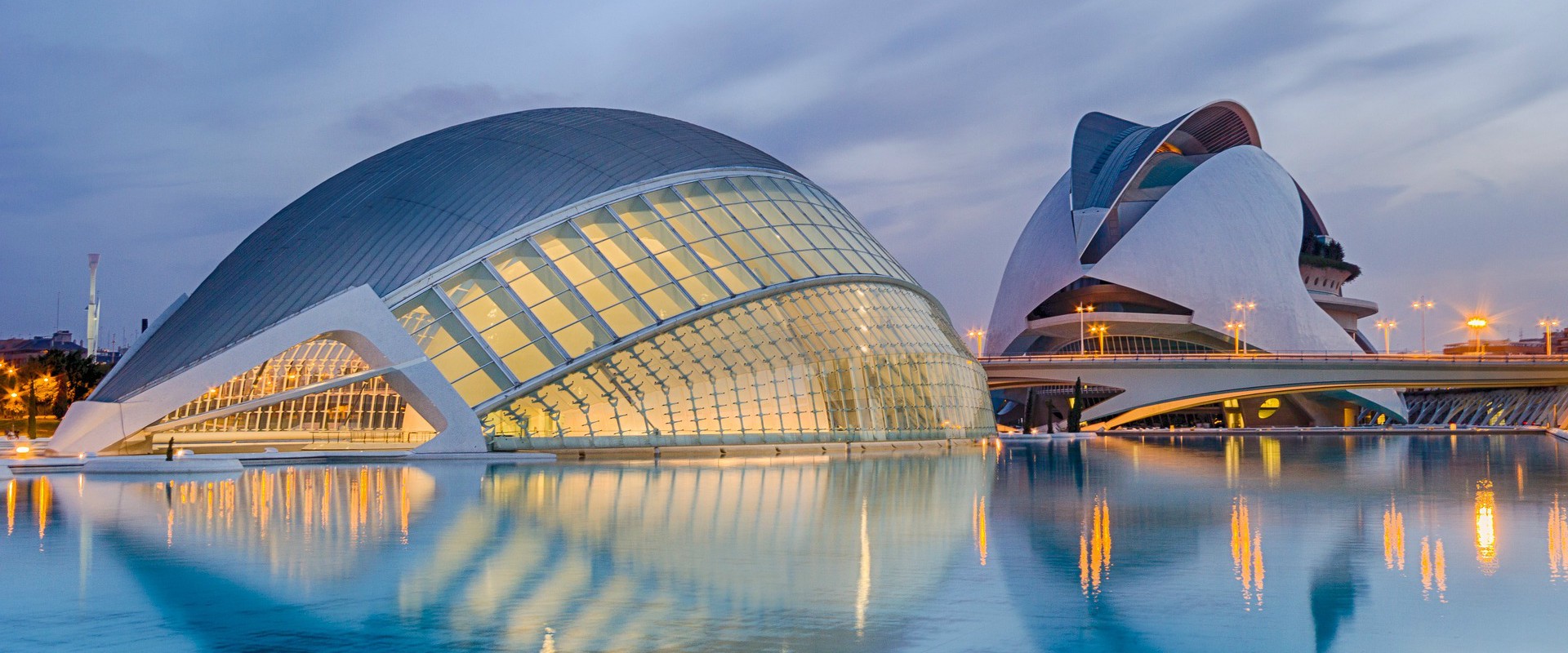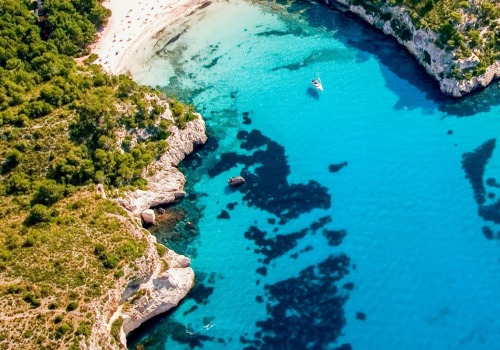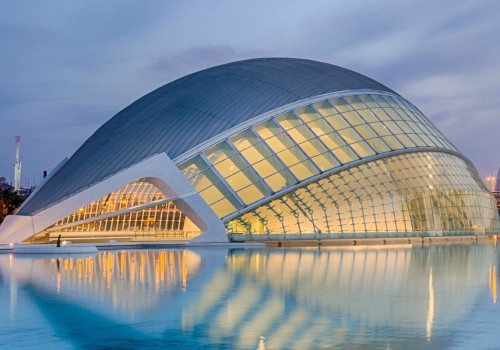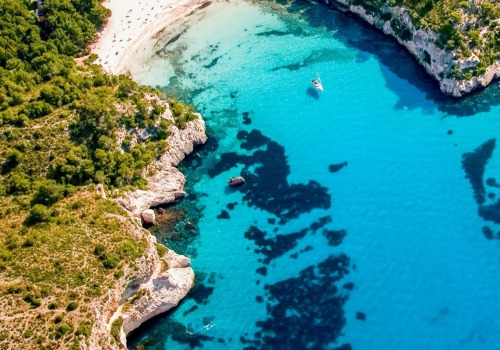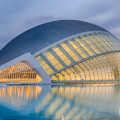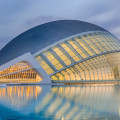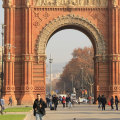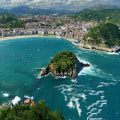The outstanding Basilica of the Sagrada Familia, located in the city of Barcelona, is still the most visited attraction in Spain and is arguably the best place to visit in Spain. A World Heritage Site, the Sagrada Familia attracts more than three million visitors every year. The gardens of the Alhambra and the Generalife, Granada The Great Mosque of Cordoba (Mosque) Construction materials of Roman and Visigoth buildings were used in the construction, which began in 785, and by 1000 had grown to its current dimensions, its prayer hall with no less than nineteen corridors. No matter where you are or in which direction you look, its rows of columns and rounded Moorish arches line up in symmetrical patterns.
San Lorenzo de El Escorial, about 45 kilometers northwest of Madrid, was the summer home of the kings of Spain, and in 1563, work began here on a huge complex, which would include a monastery, a church, a royal palace, a mausoleum, a library and a museum, all conceived as a monument to Philip II and his reign. The result is an impressive collection of attractions, built around 16 courtyards, their rooms and structures connected by 16 kilometers of corridors. At its core is the church, whose highlight is the 30-meter-high altarpiece of Herrera, made of jasper and red marble and accessed by a stretch of 17 steps. La Giralda tower, Seville Cathedral and Alcázar combine to form a UNESCO World Heritage Site.
The tower is a minaret, a masterpiece of Almohad architecture, according to UNESCO. The cathedral has more interior space than St. Peter in Rome and a 37-meter high altar of carved statues completely covered with gold. The opposite Alcazar was started by the Moors in 712 and continued after the Christian reconquest by King Pedro in the 1300s in the ornate neo-Moorish style called Mudejar.
The rooms and lounges are stunning, and the gardens are a pleasure to stroll, shaded by fragrant orange and lemon trees. To the east is Santa Cruz, the old Jewish Quarter, a neighborhood of whitewashed houses, iron balconies and courtyards full of flowers. One of the most outstanding monuments of early Romanesque architecture, the cathedral was built between 1060 and 1211, and despite the Baroque transformation of the exterior in the 16th to 18th centuries, the interior remains in the purest early Romanesque style. You'll see these two periods at play as you enter the western front, through one of the most impressive church facades in Spain.
Enter to look towards the Portico de la Gloria, part of the old west front now hidden by the 18th century façade. This triple door is one of the largest and most magnificent collections of Romanesque sculpture in the world. The heartbeat of Spain's vibrant capital, Plaza Mayor, has played an important role in Madrid's life since the 16th century, when Philip II entrusted the task of designing it to his favorite architect Juan de Herrera, builder of El Escorial. Built for the Ibero-American Exhibition of 1929 to celebrate the regions of Spain, the Plaza de España is an impressive semicircular pavilion surrounded by colonnades.
Beautiful panels of colored tiles representing each of the provinces of Spain overlook the long swimming pool, which is crossed by bridges. It's a popular spot for strolling or paddling on a rental boat around the pool and under bridges. The largest and most lively beach is Playa Inglés in Maspalomas, which abounds with cafes, restaurants, shops, playgrounds and other attractions. At one end is one of the natural wonders of the archipelago, a vast protected area of gigantic sand dunes.
These reach a height of up to 12 meters and change constantly as they are shaped by the wind and the sea. To complete the illusion of the desert, you can ride a camel through this desolate and unearthly landscape. You can explore El Teide in several ways. You can drive or walk inside the caldera, the crater floor, 12 miles in diameter and an arid lunar landscape of colorful rock formations that is like driving towards the center of the earth.
You can climb the Teide cone, but an easier way to get close to the top is by taking an eight-minute cable car ride. On a clear day, the views cover the entire archipelago and can extend to North Africa, the closest land mass to the Canary Islands. The most spectacular is Arcos de la Frontera, whose square next to the Gothic church ends vertiginously on a 137-meter cliff, which overlooks a valley of olive, orange and almond trees. Its labyrinth of winding cobblestone streets lead to cafes and craft shops selling pottery and ceramics to a Moorish castle.
A total of 19 of these villages with small white houses are located in the vicinity of the Grazalema Nature Reserve. Grazalema and Zahara de la Sierra are two others worth seeing. A good starting point in the region is Jerez de la Frontera, home of flamenco and Andalusian thoroughbreds. See the precision ballet of these horses at the Royal Andalusian School of Equestrian Art and, to enjoy authentic flamenco, visit the Flamenco Cultural Center.
Pamplona is a city in Navarra, famous for its San Fermín festival that is held every year from 6 to 14 July. At the heart of the festival is El Encierro, el encierro, an activity that consists of running in front of a dozen bulls that have been released, on a tour of the streets of the city. Protected from strong winds by steep cliffs and islands, many say that La Concha, in San Sebastián, is one of the best urban beaches in Europe, let alone in Spain. Here you can surf, stroll along the promenade in search of good restaurants and enjoy the beautiful views of the beach.
The Aqueduct of Segovia is one of the best preserved monuments left by the Romans in Spain. The old aqueduct carries water 16 km (10 miles) from the Frio River to Segovia and was built with about 24,000 solid granite blocks without the use of mortar. Probably built around 50 AD, it still provided water to the city in the 20th century. Located between Madrid and Valencia, Cuenca is a wonderful example of a medieval city, built on the steep slopes of a mountain.
The numerous “hanging houses” are built to the edge of the cliff, making Cuenca one of the most striking cities in Spain, a jewel in the province of Castilla La Mancha. Ibiza is one of the Balearic Islands in the Mediterranean Sea, off the coast of Spain. The island is one of the most popular party destinations in all of Europe. During the summer, the island's population doubles as tourists flock to Ibiza to enjoy nightclubs, beach bars and restaurants.
Located in the foothills of the Sierra de Guadarrama, El Escorial was the political center of the Spanish empire under King Philip II. Philip named Juan Bautista de Toledo an architect in 1559 and together they designed El Escorial as a monument to the role of Spain as the center of the Christian world. Nowadays it works as a monastery, royal palace, museum and school. Part fortress, part palace and part garden, the Alhambra is situated on a plateau overlooking the city of Granada, in southern Spain.
The palace was built in the 14th century by the Nasrid sultans. The Alhambra is now one of the main tourist attractions in Spain and many visitors come to Granada just to see the Alhambra. There is never a day when the Prado Museum is not full of gawking tourists. This museum houses the largest collection of Spanish and European art, of impressive medieval works from the 12th century and avant-garde movements.
Works by artists such as Goya, Raphael, Rubens and Velázquez can be found here. The institute was established 200 years ago and brings together the precious works of artists ranging from Bosch, Titian, El Greco and modern painters. First-time visitors are sure to visit this museum to witness famous works of art such as Las Meninas by Diego Velázquez and more. The Gothic architecture of Cuenca Cathedral is one of the main attractions in Spain.
Originally built in the 12th century, this attractive monument houses the precious remains of the founding bishops and members of the Montemayor family. Tourists visit this cathedral to see the 18th century altar, the Renaissance-style arch of Arco de Jamete and the intricate carved wooden ceiling. The church also hosts art exhibitions and other private events. When visiting Cuenca, it's hard to miss this cathedral because it's conveniently located in the central Plaza Mayor.
The tour consists of 37 different stops to discover artifacts and remains in and around the church. The gigantic arched gate that leads to the cathedral is truly fascinating, as travelers gather here to take some pictures. High on Barcelona's skyline is the historic Sagrada Familia, designed by Catalan architect Antoni Gaudí. The construction of this Roman Catholic church began in 1882 and is one of Gaudí's most famous works.
The basilica can accommodate about 14,000 people inside and is 170 meters high. The medieval fortress located on a plateau is the Alhambra Palace itself in Granada. Built in the 14th century by Nasrid sultans, this infrastructure represented Spanish civilization in the Middle Ages. Construction of the palace began in 712 and continued after the conquest of King Peter in the 1300 century.
In addition to the exterior, the rooms and living rooms are impressive, with neo-Moorish details throughout. The garden is also a must see, nestled in fragrant orange and lemon trees. It is only in Barcelona that tourists can find a Gaudí public park of more than 17 hectares in size. Famous for its glamorous terrace, iconic entrance and curved stone columns, this museum showcases some of Gaudí's works.
The museum houses the iconic dragon staircase, the hypostyle room, the Austria gardens and the portico of the laundry room. Perfect for a walk in the open air, Park Güell receives an annual tourist count of around 12 million, who come here for the architectural wonder. The lush environment combined with unconventional infrastructure, this public park is considered a work of art. UNESCO added Park Güell as a World Heritage Site in 1984, which served as one of the cultural assets existing today.
What is Spain famous for? 10 best-known things in Spain. El Teide, Tenerife, is a mountain range with a volcano, which acts as a central point of attraction. Often considered one of the most beautiful buildings in the world, La Sagrada Familia is a must-see attraction for anyone visiting Barcelona. Spain Travel AppsTourist Attractions in BarcelonaBest Cities to Visit in SpainTomatina Festival, SpainEating tapas in Granada, SpainVegan Restaurants in Alicante, Spain.
Although it is busy in summer, even along the coast of the large tourist coasts, you can easily find some nice beaches. With a mile-long stretch of pristine white sand and sunbeams covering the entire coastline, the beaches of the Costa del Sol offer sun and sand retreats for tourists. Not only the buildings, but the museums, the art rooms and the aquarium (by Félix Candela and the only building not designed by Calatrava) form a series of tourist attractions that are among the most popular in Spain. These caves are one of the most important tourist attractions in Spain and receive more than 250,000 visitors every year.
The grandeur of this palace is witnessed by millions of tourists who visit Granada in search of a cultural retreat. San Millán is one of the main attractions in La Rioja and one of the most fascinating monasteries in Spain. The New Bridge or New Bridge of Ronda is Ronda's main tourist attraction and one of the icons of Andalusia and Spain. The last thing you want is to miss the opportunity to see the buildings or attractions that you are passionate about, because there are a lot of people and the attractions are at their capacity.
. .
